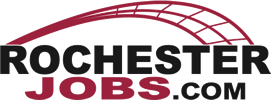It was not that long ago that you could count on an actual human being to physically review your resume to determine your candidacy. In the past, you would not necessarily expect it to be a long read, but a person would need to look at your qualifications and education and determine if you should be interviewed. With modern technology, in most situations, a company has their Applicant Tracking System (ATS) scan your submitted document for key words that will assess whether you should move forward. An ATS is the software that a company uses to capture, review (in most circumstances), folder, process, etc. your submitted resume. The use of an ATS builds efficiencies, eases information transfer and storage, and assists with compliance for the employer.
What does this mean to you? The most obvious impact is that you have to adapt your resume for the ATS world and make sure that your qualifications will be accurately assessed by the tool. We will get into this more a little bit later. An example of a less obvious impact is that an ATS screen is less likely to positively review you for transferable skills or work experience that does not exactly match up with what is being sought on the job description. Perhaps that is why a recent survey by Resume Lab found that 70% of job seekers lie on their resume, with 37% lying frequently. I will never advocate for being untruthful, so instead, let’s focus on what you can do to be more “ATS friendly”.
So, how can you better draft your resume for the electronic eye of an ATS system? Below are some tips for you to consider when reviewing your existing document.
• Match Job-Related Skills: Customize your resume for each position that you are applying for. Your customization should consist of pulling the exact verbiage and terminology used in the job posting and replicating this on your resume (assuming that you have the skill or qualification in question). This matching includes converting terms that are synonymous to the exact one that the employer is using. By doing so, you will not only be making your resume more ATS friendly, but also providing yourself with a huge competitive advantage over the job seekers who are just instantly applying using a standard document.
• Use Action Verbs: Writing in this style will bring to life what you have written in your resume. An action verb describes what is being done by the subject of the sentence. Some action verbs have more impact than others when someone is reading. For example, words such as “created”, “launched”, or “increased” convey much greater meaning than other similar alternatives. ATS typically gravitate to action verb driven language.
• Standard Formatting: Wild fonts and graphics do not play well with ATS systems which are scanning to pick out key points out of your resume. The more unique your resume formatting is, the harder it will be for the ATS to accurately review. Try to stay consistent with your font, bullet point patterns, and spacing. A fairly standard font is 12pt Times New Roman. You may want to pursue a pre-created ATS-friendly template in order to take some of the guesswork out of your structure creation. Finally, your document should be sent in the standard PDF format. The exception is sending in the base Word format of .docx but doing this may leave your document subject to unwanted editing unless you apply special security to it.
Don’t forget the importance of the core qualities of a well-written resume. You need to scrub your document for any grammatical or spelling errors. Be sure to include key selling points such as examples of money saved, key projects, awards won, etc. Your resume should do more than list what your tasks were, but rather highlight what you have accomplished.
In order to make it to the Hiring Manager and to secure your coveted chance to interview the person sought, you likely must get past the ATS screening tool reviewing your resume. To accommodate this new technology, you may need to give your resume a thorough review and edit in order to make it more ATS friendly. The good news is that a reading of the job posting, in comparison to your resume, should highlight the keywords that you need to make sure are included in your document.
As always, best of luck in your job search!
The following has been prepared for the general information of RochesterJobs readers. It is not meant to provide advice with respect to any specific legal or policy matter and should not be acted upon without verification by the reader.
Joe Stein
WNY Human Resources Professional
Feel free to contact Joe Stein regarding questions or comments at:
Joe Stein

